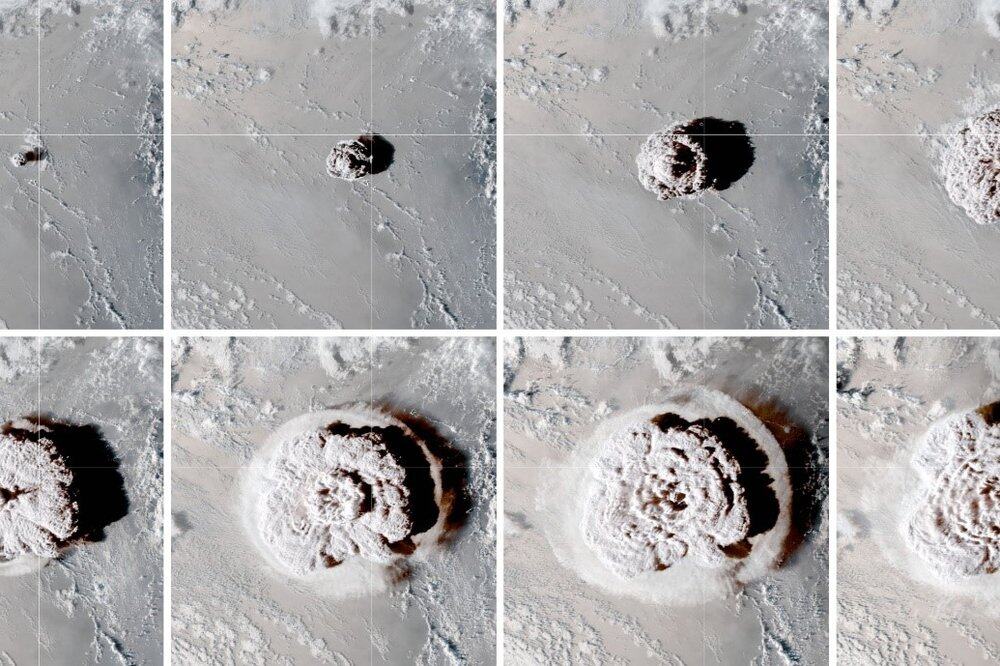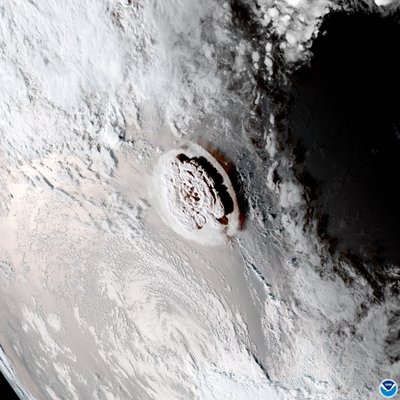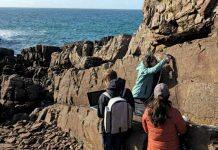Hunga Volcano in the Kingdom of Tonga began a new eruptive sequence on 19 December 2021, culminating in the climactic eruption on 15 January 2022.


A new research paper, co-authored by a Massey PhD student, sheds light on the eruption.
This climactic phase of the eruption caused a disruption in communications for the nation of Tonga, highlighting the importance of remote geophysical monitoring of volcanoes. The eruption produced a plume and umbrella cloud at approximately 30km above sea level, and an impressive atmospheric signal which was recorded globally. Not only was this signal picked up by pressure sensors around the world but the interaction between the atmosphere and ocean generated tsunami waves globally.
The research article was published in Science journal by a global team of experts examined this eruption and its rare phenomenon. The comprehensive analysis was a global effort – carried out by 76 authors from 17 countries, and including experts in seismology, acoustics, tsunamis, infrasound, ionospheric perturbations, and volcanology.
Lead author Dr Robin Matoza from University of California, Santa Barbara says, “the atmospheric wave event was unprecedented in the modern geophysical record. Obviously, I had not seen anything like this in my career. When we first started looking at the data being captured, it felt surreal.”
The eruption itself was unique and complex with many unprecedented aspects and phenomena that are rare in the modern instrumented era. This group completed the analysis of thousands of stations from more than 100 different geophysical networks in around one month.


Co-author and Massey PhD student Anna Perttu who participated in the analysis of the infrasound signals explains.
“Sound is actually a pressure wave in the atmosphere, and infrasound is defined as sound with frequencies below human hearing. This signal, however, crossed the boundaries between what we consider acoustics, which humans can hear, infrasound, which we can’t, and even down lower in the frequencies we call acoustic gravity waves.”
Due to the range of this sound, experts from this wide range of signal types worked together.
This eruption produced a variety of atmospheric signals including local shock wave, sound audible in New Zealand, and a global low frequency acoustic gravity wave called a Lamb wave.
“This signal, also known as a Lamb wave, was similar in size to one produced in the 1883 Krakatau eruption, making this a once in a century type of signal and event. The signal was found to have completed four trips around the globe across six days as recorded by the global pressure sensor network,” Ms Perttu says.
“The atmospheric signal from this eruption was not only comparable to the Krakatau signal in 1883, but also an order of magnitude larger than those generated by the 1980 Mt St Helens (Lawetlat’la) eruption. In addition, like the 1883 eruption of Krakatau the eruption was heard at great distances,” Ms Perttu adds.
The eruption was not only heard in New Zealand but also as far away as Alaska.
Dr Matoza says the long-range audibility (approximately 10,000 km) cannot be explained by unattenuated audio-range frequencies originating near the source. “Such frequency components would not ‘survive’ the whole path from Hunga to Alaska” and based on the spectral properties and waveform shapes, a more complex set of propagation effects is at work.
The eruption generated locally devastating tsunamis. While these were generated with classic volcano-tsunami generation, not all of the globally recorded tsunami waves were.
“Some globally recorded tsunami waves were generated by the atmospheric waves as they travelled across bodies of water. This caused some waves to arrive faster than predicted by tsunami modelling. This also caused air-sea tsunami waves to be generated in bodies of water not immediately connected with the Pacific Ocean, like the Atlantic Ocean and Mediterranean Sea. The vast majority of tsunamis are generated by earthquakes, and events like this and the 2018 eruption of Anak Krakatau give us an opportunity for further understanding how tsunamis can be generated during volcanic activity which helps us improve our understanding for future eruptions,” added Ms Perttu.
The article, Atmospheric waves and global seismo-acoustic observations of the January 2022 Hunga eruption, Tonga, was published in Science on 12 May 2022.








































